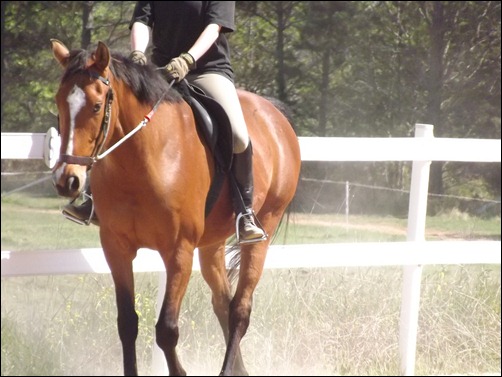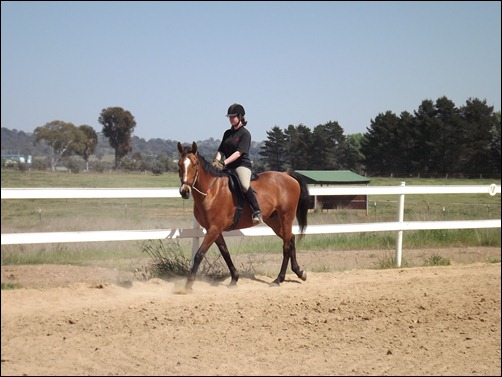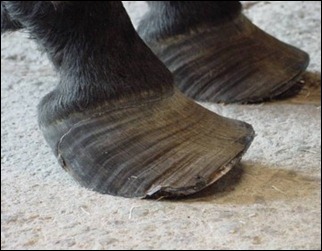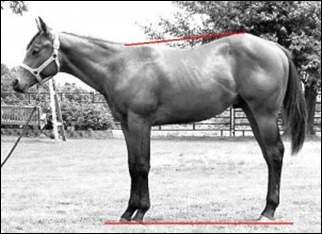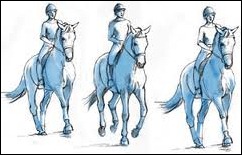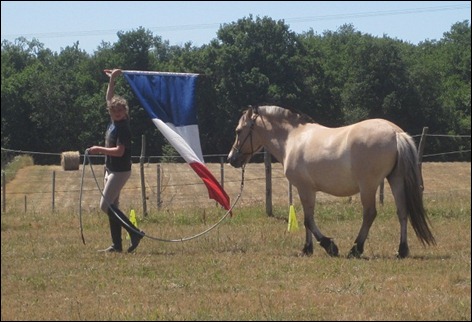
“Broke” is a term usually found in Western riding to describe a horse that English riders would probably consider an “all rounder” or a “handy pony”. What I like about the Western term however, is how it is far more basic than just training. It can also apply to any type of horse regardless of it’s formal training; i.e. cutters, reiners, Western Pleasure, dressage, showjumpers ~ any of those horses can be ‘broke’.
Conversely, the same is true that any of those horses, although they may be champion cutters, etc, can also
not be broke. So if a horse is ridden, and goes under saddle; how is it not broke? Let’s look one definition of a broke horse and how this can apply to any horse in any training situation.
“A broke horse means that the horse can do many different things and do them safely and calmly”
So what should the horse be able to do? General consensus says that a green broke horse should be able to lead, tie up, get their feet done, walk, trot, canter and perhaps do some lounge work, you know, the basics.

Building on that basis, a broke horse should be able to trail ride, float/trailer, get their teeth done, go to shows, ride smoothly, correct lead, flexion; etc, they should essentially be covered in most areas of education, without necessarily having specialty training for disciplines like show jumping.
However, one trainer I read believes that a truly broke horse should be able to do way more than that, and I agree! This is where cross training comes in, and it’s also why a horse that is trained as a specialist in one discipline can also be considered to not be fully broke. What if you hopped on a horse that was a brilliant show hack, but it couldn’t go out on a trail ride without bolting for home? That horse wouldn’t be very well trained would it!
Can you take your horse through a line of bending poles at a canter, or ride a long trail ride through ditches, traffic and underpasses? Can you lead him past a flapping tarp without getting jumped on? How about riding in a bitless bridle ~ or without a bridle at all? Or in a western saddle? Or how about a side saddle?
I only wish I could do all of that! Still, I believe that a truly broke horse, and one that is a pleasure to ride, is a horse with
experience ~ one that will trust it’s rider and be game to do whatever it is you would like it to do.
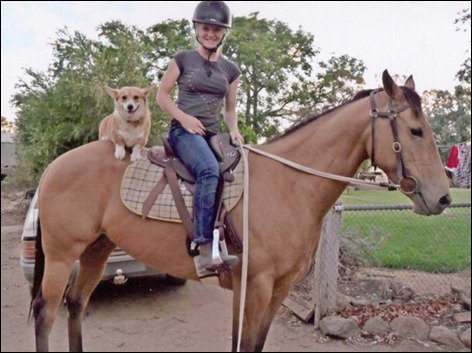
Therefore I have set myself a training challenge ~
cross train to the max. I want to do as many different things as possible with my horses so that I expose them anything and everything. It takes time and it takes patience, but I think that in the end you and your horse will have more fun and be safer for it.
Top Tip: If you ever notice your horse reacting to something {
like a piece of rustling paper ~ been there, done that!} unless you are in the middle of a dressage test, or something, take the time to desensitize them to it right away!
Stopping and taking fifteen minutes, {
maybe more, maybe less ~ remember that it depends on the individual horse} at that exact point of reaction may save you a lot of hassle later on down the track.
See ya!
bonita
P.S. ~ Does anyone know where I can get hold of some cows?
; P I would love to see Copper take a gander at them!







